Environment & Energy
Related: About this forumEvaluations of Sustainability of Making Hydrogen from Waste Plastics With Various Approaches.
The paper I'll discuss in this post is this one: Environmental Sustainability Assessment of Hydrogen from Waste Polymers, Cecilia Salah, Selene Cobo, Javier Pérez-Ramírez, and Gonzalo Guillén-Gosálbez, ACS Sustainable Chemistry & Engineering 2023 11 (8), 3238-3247.
The graphic associated with the abstract of the paper is nicely evocative in terms of money:
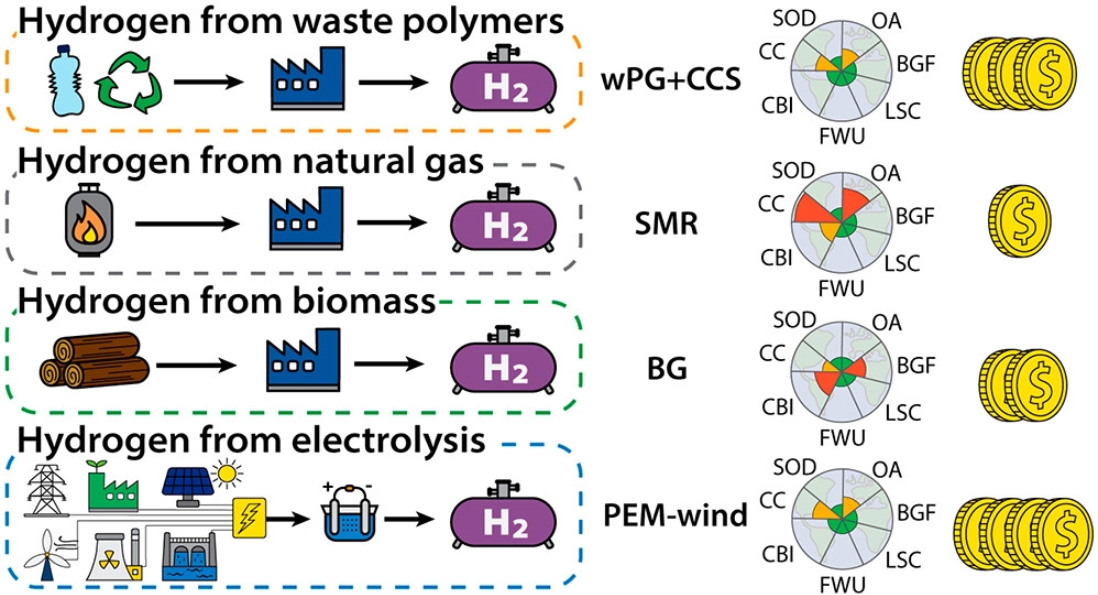
The environmental impact, i.e. the external cost, is slightly different, since while dangerous natural gas based hydrogen, which overwhelmingly dominates the source of the world's hydrogen, and has done so for well over half a century - although coal and oil are also often utilized - is a rather large contributor to climate change.
In general, here and elsewhere, people whose focus in the area of energy and the environment who want to talk about monetary costs of energy sources - this only for their own generation, with contempt for future generations - are disinterested entirely in climate change and other impacts of the dangerous fossil fuel game. Seen in a way consistent with what I personally regard as ethics, natural gas/coal/petroleum based hydrogen, on which the world food supply depends for now, has the highest cost, in external costs.
As far as electrolysis, which is hyped endlessly by people embracing the "wind and solar will save us" scam, it is the most expensive for all sources of electricity, both in monetary and environmental terms, since electricity is a derived source of energy, badly thermodynamically degraded, and electrolysis further degrades it thermodynamically and economically.
Electricity is not "green," despite all the horseshit to the contrary one hears. One needs to waste energy to make it.
I am a fan of process intensification, which basically involves using waste heat from one process to power another. Process intensification reaches its highest efficiencies when the initial source of heat is at as high a temperature as can be realized, and the technical driver of this is materials science.
For the record, I find the issue discussed in this paper a worthy pursuit; I often reflect on steam reforming of municipal waste as a possible contributor to addressing climate change, and, albeit at a low level to the extent that municipal waste contains biomass, as a possible contributor to the capture of the dangerous fossil fuel waste CO2 from the atmosphere, indirect air capture.
The paper's introduction begins with a paragraph that is a statement of the problem:
In my generation, we were very proud of our embrace of "recycling" and we have generalized it to other stuff. As the paragraph shows, it's not really working.
The introduction continues:
Alternatively, gasification of wP could yield H2 to decarbonize several sectors, (21) including transportation and industry, responsible for 25.7% and 19.7% of all greenhouse gas (GHG) emissions in 2019, respectively. (22) Steam methane reforming (SMR) is currently the preferred pathway to produce H2 from natural gas (gray H2), while blue H2 from SMR coupled with carbon capture and storage (CCS) and green H2 from electrolysis based on renewables or biomass gasification are still marginal. To date, SMR is the cheapest technology, (23) but other alternatives could reduce human health and ecosystems impacts substantially. (24) Notably, previous works applied life cycle assessment (LCA) to H2 pathways, finding that gray H2 embeds the highest global warming impacts (GWI) among existing technologies. (23) Moreover, Verma et al. showed that coupling CCS with SMR significantly reduces fossil-based H2’s net life cycle GHG emissions (to less than half), making blue H2 environmentally competitive against electrolytic H2 from renewables. (25) Moreover, Bhandari et al. found that the electricity source heavily influences the environmental performance of electrolytic routes at the mid- and end point impact levels. (26) On the economic side, Lan and Yao recently discussed that producing H2 via wP gasification in the US could yield competitive costs with blue H2 in the local market. (27)
LCA has become the preferred approach for evaluating the environmental impact of technologies. (28) However, standard LCAs are mostly applied to compare alternatives as they lack thresholds beyond which a system should be deemed unsustainable, making the interpretation phase challenging. Absolute environmental sustainability assessment (AESA) studies have recently emerged to define environmental limits on impact metrics. (30?32) (29...
All this talk of "sequestration" by the way is nonsense. Building vast carbon dioxide dumps is basically an idea - I include solar and wind in this category - which are designed to market the continuous use of dangerous fossil fuels by promoting, as a marketing expense, the idea that fossil fuels will magically become sustainable. They will not. They must be banned to save what is left to be saved, and to restore what can be restored.
The paper defines "SOS" as "Safe Operating Space" and goes on to compare 13 different approaches to the gasification of dangerous polymer waste. (One should keep in mind that almost all of the world's plastic waste, so far as CO2 is concerned, originated from dangerous fossil fuels. Plastic is sequestered carbon.)
The paper begins with a generalized process flow diagram of a reformer system. The issue not shown in this diagram, and which has the most important consequences from an environmental standpoint, is the source of the low pressure and high pressure steam, as well as the mechanical energy associated with compression. Note that the system relies on carbon dioxide dumps. This fantasy should be a nonstarter, but this would be a minor criticism if we substitute CCU (carbon capture and utilization) for CCS, (carbon capture and sequestration.)

The caption:
The graphics in this paper are quite evocative. The paper deigns to answer the question of all potential sources of hydrogen, including those involved in the "solar and wind will save us" fantasies:
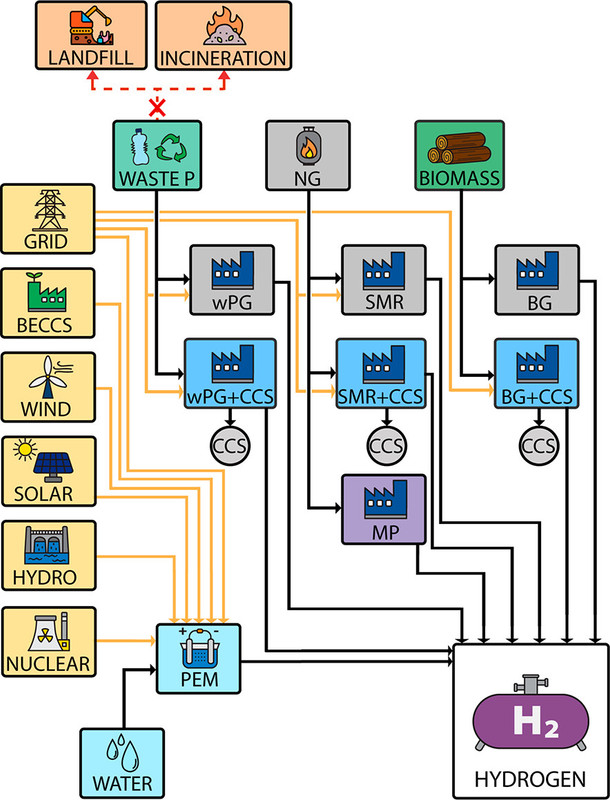
The caption:
Now the authors cut to the chase, global warming impact of all approaches, regrettably including carbon dioxide dumps in their scenarios; the most negative in this diagram, in my view, should be ignored:
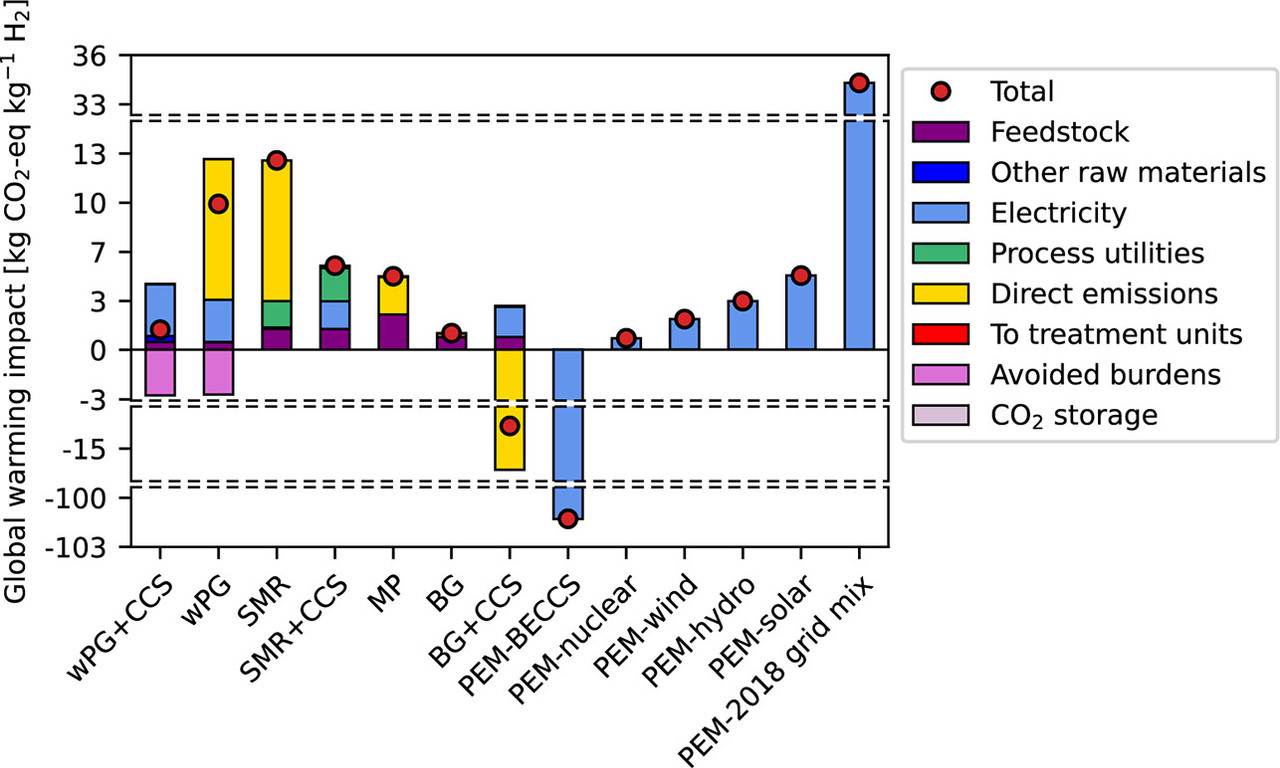
The caption:
Here's a table of results, as a graphic, from the paper's described system boundaries, with which I have major quibbles, the biggest being the continued reference to carbon dioxide dumps, and most others connected with I regard as weak appreciation of land use changes, but also because there is a glaring omission in the nuclear case. All of the abbreviations can be found in the caption.

The caption:
The glaring omission in the nuclear case is the question of rather than relying on nuclear electricity, one should consider nuclear steam. A nuclear powerplant, and this pretty much covers all existing nuclear plants, is not optimized if the only purpose for it is to make thermodynamically degraded electricity. This idea, of utilizing nuclear heat as a process driver is gaining a huge amount of attention. The nation most advanced in bringing this idea to fruition is probably Poland, where serious design work on using SMR's as process heat providers is actively being planned.
An account of the cost of hydrogen by various discussions of approaches to making it as discussed in the paper.
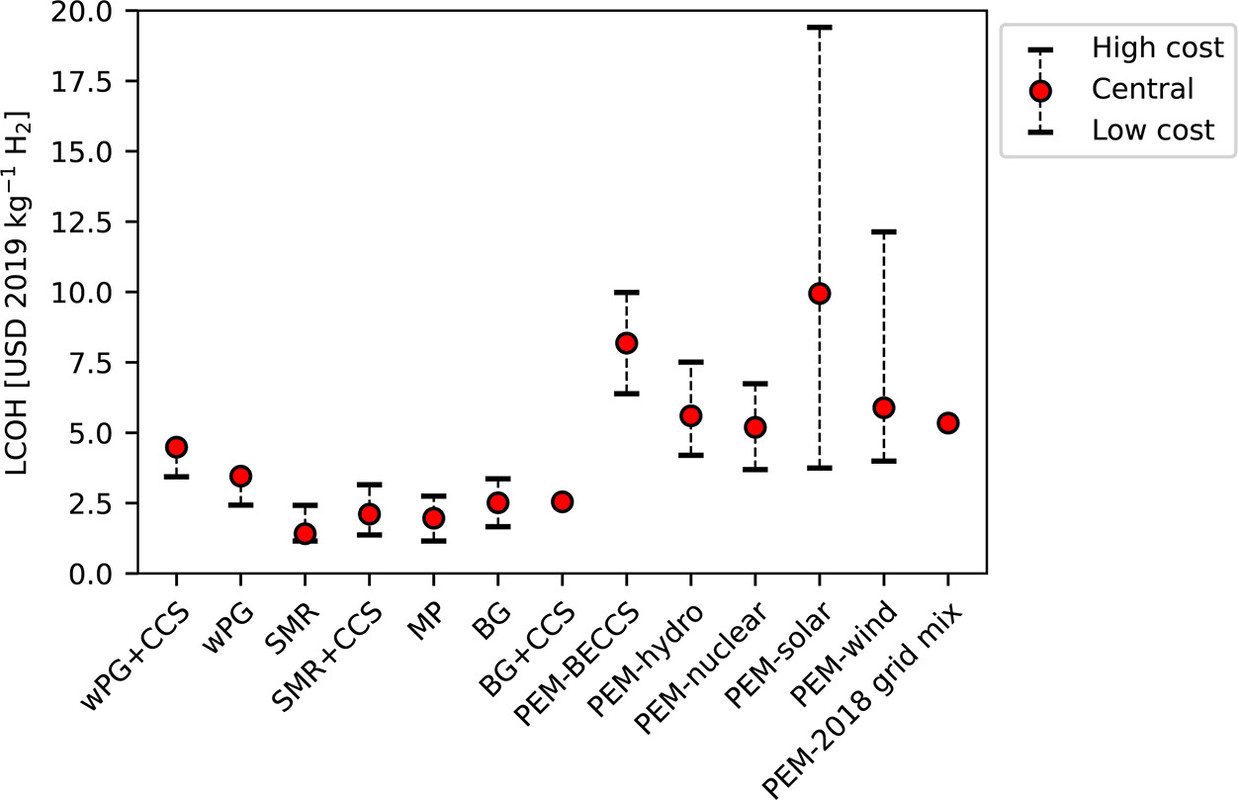
The caption:
Note that this paper, as shown in this diagram, treats nuclear plants as electricity generating devices.
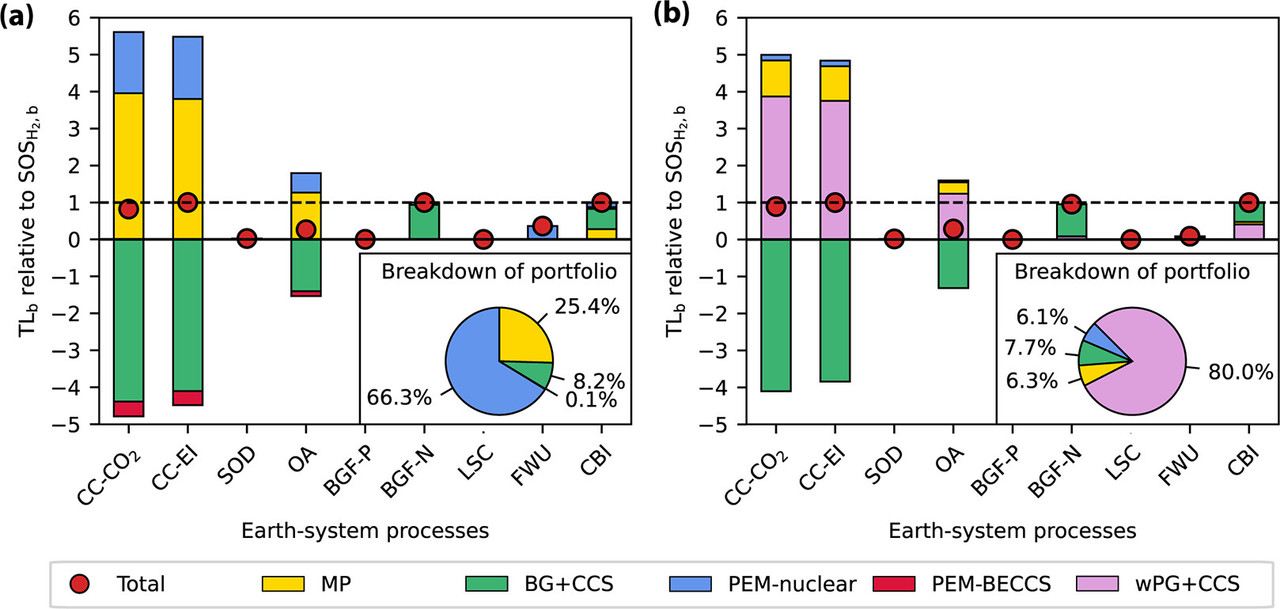
The caption:
I have lots of quibbles with the paper, particularly the reliance on putative carbon dioxide dumps, and the conservative approach to the use of nuclear energy as a being limited to making thermodynamically degraded electricity.
The paper does not discuss how hydrogen might be used. We hear a lot of stupid commentary on hydrogen cars, trucks, buses, blah, blah, blah. This is not a wise approach to hydrogen utilization; in fact it's a disastrous idea, a waste of money, resources and time. This said, captive hydrogen can play an important role in building environmental homeostasis. It is theoretically possible to close the industrial carbon cycle by the hydrogenation of carbon dioxide to useful chemicals, including, but hardly limited to, sustainable polymers.
Enjoy the rest of the weekend.